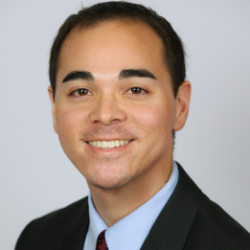While rounding in the ICU, Dr. Omar Lateef got an unexpected call from the hospital’s CMO. The CMO told him there were too many infections. Dr. Lateef’s initial thought was, “You must have really good eyes to see the infections that we have.”
As Dr. Lateef started connecting with others at various institutions and national meetings, he began to realize that he wasn’t alone in wanting to better understand discrepancies in quality and safety data. He credits his early data quality work at his hospital as the stepping stone toward becoming the CMO himself, and now the CEO of Rush University Medical Center.
One of RUSH’s first wins in improving data quality was uncovering errors in the safety scores at RUSH reported by an external reviewer. The reviewer had inaccurate rates for pressure ulcers, perioperative hemorrhage, and postoperative respiratory failure for RUSH when compared with the hospital’s own data. This is because the external reviewer was using de-identified data that lacked essential fields to enable measurement of time-dependent patient safety indicators. As a result of this work, the external reviewer made changes to its methodology and data sources.
“The metrics should be transparent. They should not be a black box,” Dr. Lateef said. He shared that his passion lies in making sure that clinicians are accountable to transparency, but also to patients. To do this, he believes that it takes teamwork. “Looking at data, making sure that [hospitals and external reviewers are] measuring data the same way, making sure that each institution is getting credit for the accurate data that they have — that's how patients can make their decisions,” he said.
After looking at data quality issues locally, the team at RUSH investigated the accuracy of hospital rankings on a national level, comparing several consumer-oriented benchmarking methods to each other. For five major ranking systems (U.S. News and World Report, Vizient Quality and Accountability Study, CMS Star Rating, Leapfrog Hospital Safety Grade, and the Truven Top 100 Hospitals), they found substantial variability between the rankings of top-performing hospitals.
This early work helped shape how Dr. Lateef looks at health care in Chicago today. “When we look at quality, you must understand what is being measured. What is the outcome being measured, and does it make sense?” he said.
Dr. Lateef described RUSH’s mission as, “Improving inequity in health care by working to decrease the death gap in the city of Chicago. And what does that mean? That means that if you're born on Michigan Avenue where all the stores are, you'll live about 16 years longer than if you're five subway stops West. The cause of death is not trauma or gun violence. The causes of death are chronic diseases including heart disease, diabetes, and strokes. We decided to stop publishing the problem and start real work to solve it. We recognize that chronic health is more than blood pressure control, but making healthy food available, and helping find jobs for people in the local communities.”
RUSH functions as an anchor institution for the community, investing in and supporting the neighborhood. They have tutoring and employment advancement programs for community members living near RUSH, such as taking them to the Epic headquarters to provide training on using the software, further enhancing their opportunities for higher paying jobs. RUSH also co-created a collaborative called West Side United, which aims to leverage the core business practices of hiring, purchasing, investing, and volunteering to build health and economic vitality in the West Side of Chicago.
RUSH is laser focused on improving health equity, another piece of health care that’s not measured consistently. “We as a health care industry can't solve inequity on our backs alone. Payers have to get involved; the government has to get involved. You can't just ask hospitals, go solve inequity. We all have to solve inequity, and we'll be a part of that,” Dr. Lateef said.
External reviewers are coming out with equity measures, but Dr. Lateef worries about their accuracy. He said, “Seeing the metrics that are starting to roll out, there is little confidence that the measures will be right. There is no defined, accepted way to measure community benefit, so looking at pieces of what hospitals do based on different definitions will not represent hospitals' dedications to their communities.”
While much of health care is fragmented, so is the data. Dr. Lateef aims to continue improving health outcomes by improving the quality of the data that’s collected and shared. He said, “We have to be careful as we look into the world of how we're going to measure and say good versus bad, because we have to make sure we're right.”
“I am working for people that are heroes trying to make a difference,” Dr. Lateef said. “And we have to make it easier for those heroes to make an impact by removing the red tape, the bureaucracy, and just let them take care of people. Then, when you do that, we will all have great outcomes.”
Illustration by Diana Connolly







